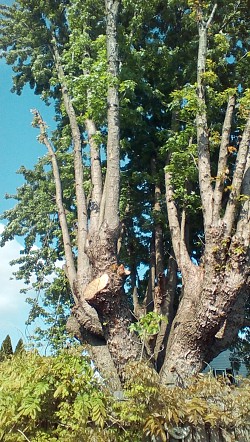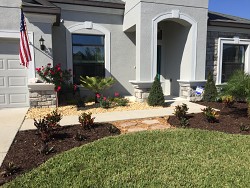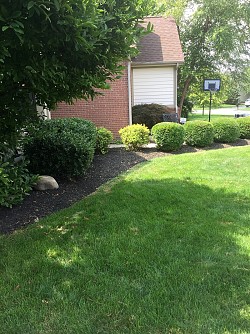Gardening for Dummies
 Have you decided to hop on board with the urban gardening trend? Whether you're limited to a few buckets in a sunny corner of the house, a little garden on the porch, or you have actual growing space outdoors, you might be a little intimidated. What do you grow, and when? How should you maintain a garden? Which supplies do you really need? Is it going to be expensive to set up? Don't worry! We love gardening, we love gardeners, and we also know how scary it can be to start out.
Have you decided to hop on board with the urban gardening trend? Whether you're limited to a few buckets in a sunny corner of the house, a little garden on the porch, or you have actual growing space outdoors, you might be a little intimidated. What do you grow, and when? How should you maintain a garden? Which supplies do you really need? Is it going to be expensive to set up? Don't worry! We love gardening, we love gardeners, and we also know how scary it can be to start out.
First things first: you don't need to be a green thumb to grow a garden. If you haven't had luck with plants before, don't think that means you can't grow veggies, okay? Like many things in life, gardening requires some skills, some experience, and some knowledge. You might not have those things yet, but lots of other people do, and they're ready to share it with you.
If you want to grow a garden, start small. Sure, you might WANT to get extravagant and plant out a huge area with all kinds of veggies this year, but it might be too much for you. Start with a few containers, so you can get the hang of things. There are several reasons we recommend starting small and scaling large as you go. The first is that it gives you inexpensive experience -- because some things are going to die or behave unexpectedly in any year of gardening, but especially your first year.
You might feel gloomy when your single container of kale dies, but imagine how much worse you'd feel if it was a whole bed. Container gardening gives you a chance to learn about what works and what doesn't, so you can grow in larger quantities in the future.
Gardening isn't just about your own skills and knowledge, like knowing when to plant (kale, FYI, should be planted in early spring to early summer) and having good soil (more about that in a minute). It's also about environmental factors that are harder to control. You need to learn about your microclimate and how it behaves so you can find out what grows and what doesn't -- and you don't want to learn that at the cost of a huge vegetable garden in your first year.
So, start with a couple of containers or small beds of things you're really interested in trying. Kale is actually a great choice, because it's extremely hardy and it tends to be forgiving. Lettuce, while a bit fussy, can be another good choice because it's a great barometer for rough weather. You can also try beets, peas, beans, strawberries, and anything else you might desire!
Consider establishing some perennial herbs, too, so your long-term garden can start shaping up.
What to grow in?
You can use all sorts of things as containers. The bottom line is that they shouldn't contain toxins, and they shouldn't be prone to falling apart. Ceramic and wood planters are a choice, of course, but so are plastic buckets, bath tubs, crates built out of pallets and other scrap wood, and even cooking pots. Your containers should have drainage, and that's about it! If you're growing in the ground, you'll need to prepare beds. Dig two shovel-depths down to turn and aerate the soil well, and line the soil with hardware cloth if you have gophers, voles, and other underground pests. (Another option is raised beds, which you build and fill with soil.)
Speaking of soil...soil medium is critical, and it takes years to build up good dirt. For your first year, you may want to buy soil or see if a local gardening center or community garden has a soil supply for beginners (if you're gardening in an urban environment, you may be able to get a free starter kit that includes dirt!). Also add compost to your soil, which you can buy or make -- here's a great guide to composting.
Use a soil testing kit to find out what's in your soil and which amendments you need to add to improve it for gardening. Think of yourself as a dirt farmer as much of a gardener, and don't stress out about getting everything perfect in your first year. As you proceed, your soil will get better.
Wherever you set up, it needs to be sunny. Some plants need as much as ten hours of sun a day to really take off. If you have limited sunny spots, you need to read seed packets carefully to determine which plants you can grow. Look for shade or part-shade plants that will be okay without a lot of direct sun.
What to grow?
Great question! Choose veggies that will thrive in your climate, and don't hesitate to ask at the nursery for advice. Many cultivars are specially bred for unusually cold, hot, wet, or dry climates, and the staff can help you pick the perfect tomato, lettuce, or bean for your climate. Follow the guides listed on seed packages to determine when you should start your seeds. You can start them early indoors and plant them out after the frost, or you can wait until after the last frost to grow outdoors -- your crops will mature later, but you won't have to deal with seedlings all over the house.
The Farmer's Almanac has a great guide to growing seasons, gardening tips, and what to grow where. You can pick up a copy at a bookstore or hardware store, or take advantage of their online resources!
Growing plants really often is as easy as sticking seeds in soil, watering, and waiting for them to sprout. At a minimum, you just need some dirt, some seeds, and a water source. If you want to get fancier, you'll need seed starting trays (if you plan on starting indoors and moving outdoors), which are often free at nurseries (they end up with extras), and can be made at home with egg cartons or yogurt cups. A spade is helpful, as is a cultivator for handling weeds, and a small trowel for transplanting.
Okay, it's growing, now what?
Watch it, water it, eat it! Keep an eye on your growing plants for signs of pests, like nibbled leaves, obvious insect infestation, or mysteriously missing seedlings, and take appropriate action (netting can discourage birds, crushed eggshells deter snails, and many organic pest management solutions take on insect pests and infections). Keep your soil damp, not soaked, and don't allow it to dry out, unless directions for a given plant specify that it likes to dry out.
For your first year, skip installing a fancy irrigation system. You should wait to see how much you enjoy gardening, and because your garden will probably expand, it doesn't make sense to put in a system yet -- the shape, size, and structure of your garden may change and you don't want to be hemmed in by a system you put in before you knew what you needed. When you are ready for irrigation, talk to your Portland plumber about setting up the hookups to the water supply.
As things start to mature, you get to the best part: eating! And we think you know how to do that.
Katie Marks writes for Networx.com.
Looking for a Pro? Call us (866) 441-6648

Landscaping Average Costs
Landscapers Experiences

Contracted A Large Tree Trimming Job For A Reasonable Price

The Right Landscaper Can Change A Yard From Terrible To Terrific



